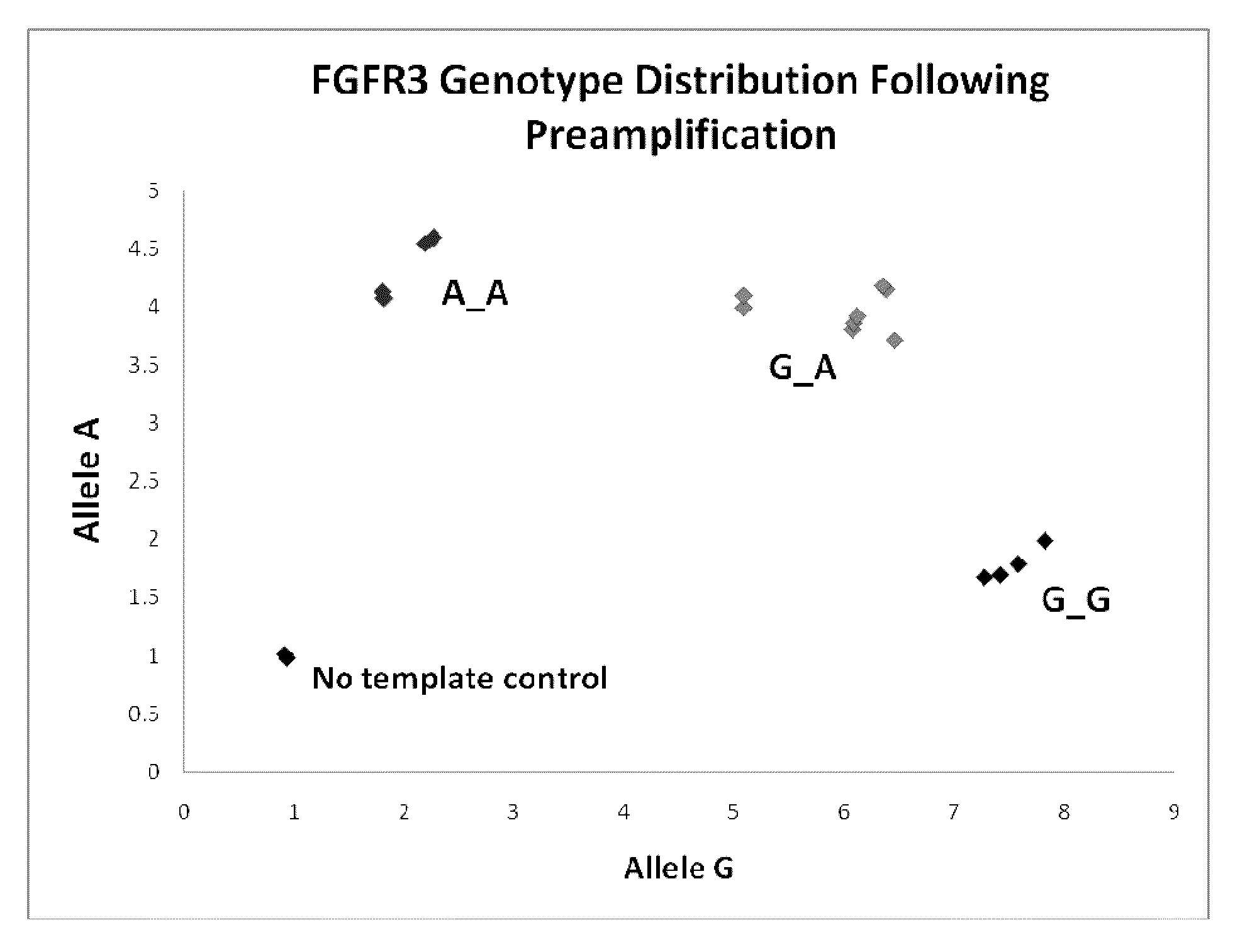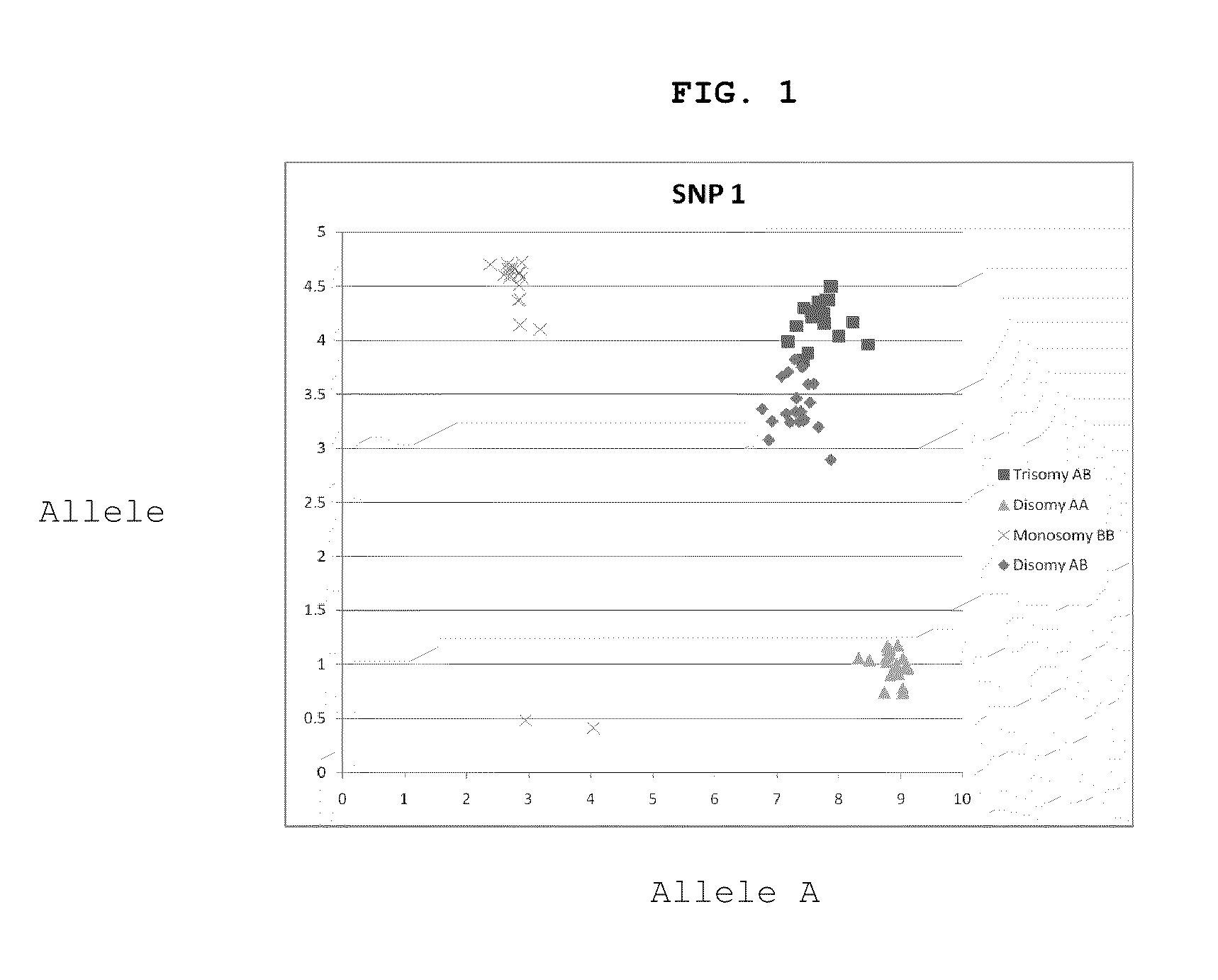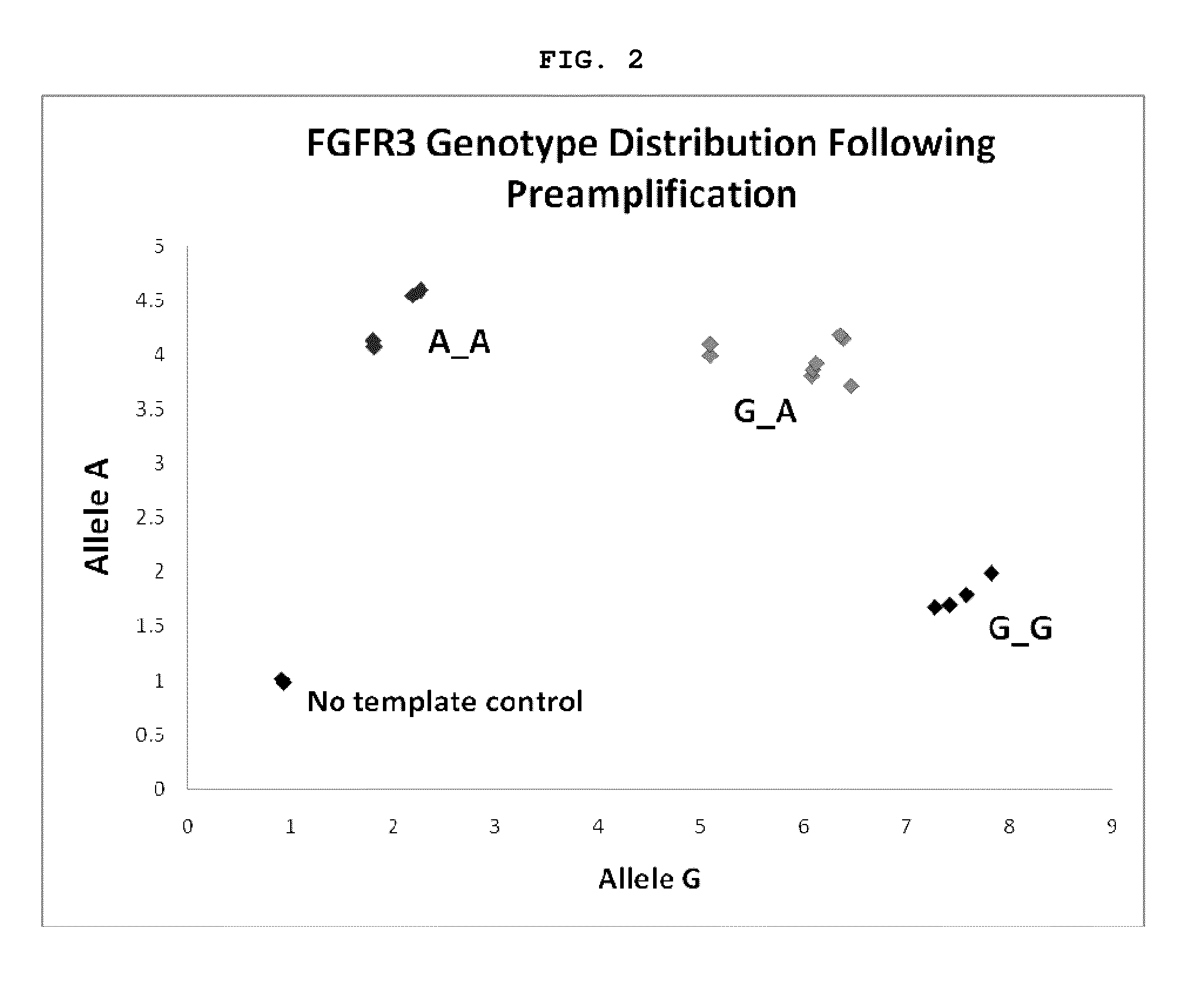Method for determining chromosomal defects in an ivf embryo
a chromosomal defect and embryo technology, applied in the field of determining chromosomal defects in an ivf embryo, can solve the problems of reducing the possibility of a high-risk multiple pregnancy and a greater chance of implantation
- Summary
- Abstract
- Description
- Claims
- Application Information
AI Technical Summary
Benefits of technology
Problems solved by technology
Method used
Image
Examples
example 1
Aneuploidy Detection Based on Genotyping Informative SNPs in Single Cells From a Trisomy 21 and a Monosomy 21 Cell Line
[0085]We established the feasibility of the techniques described in this application in a series of experiments. Experiment 1 can be divided into three steps:
[0086]Step 1. Identification of Informative SNPs.
[0087]In this example, we identified informative SNPs in cell lines with aneuploidy or euploidy of chromosome 21. To do this, we isolated total DNA from 4 cell lines (Coriell Cell Repository) known to have either a trisomy 21 (48, XY, +16, +21; ID# GM04435), a monosomy 21 (45, XX, −21; ID#GM01201), or a normal number of chromosome 21 (47, XY, +13; ID#GM02948, and 47, XY, +18; ID#GM01359). Microarray data was generated to identify SNPs with genotypes for the 4 samples which met the following criteria. We looked for SNPs that were heterozygous in the trisomy 21 cell line, homozygous in the monosomy 21 cell line, heterozygous in one of the two normal chromosome 21 c...
example 2
Single Gene Genetic Disorders Detected Based on Presence or Absence of SNP Allele
[0092]There are many types of genetic mutations that cause disorders in humans. Many single gene disorders are caused by inheritance of a causative SNP allele. For example, a transition of nucleotide G to A at position 1138 of the fibroblast growth factor receptor 3 gene (FGFR3) results in an amino acid change of Glycine to Arginine at position 380 in the FGFR3 protein, and is the major cause of dwarfism. Therefore, in the case where patients carrying the A SNP allele would prefer to prevent transfer of embryos with this mutation, the presence of A would be evaluated from embryo biopsy DNA. A SNP genotyping assay for position 1138 of FGFR3, would be performed with the outcome being presence or absence of the A allele. We tested this concept by obtaining cell lines from a family that carries this particular FGFR3 polymorphism. The parents of the affected child were both heterozygous for the dwarfism alle...
example 3
Microdeletion Detected Based on Evaluation of Informative SNPs
[0095]Disorders with genetic origins other than a SNP (i.e., microdeletions, translocations, or rearrangements) can also be screened using similar preamplification strategies and in parallel with SNP based aneuploidy screening. This is simply done by coamplification of the informative aneuploidy screening SNPs with the disease DNA locus of interest.
[0096]For example, we identified a 2.36 MB microdeletion in a patient with Alagille syndrome by using SNP microarray analysis of genomic DNA isolated from the patient's blood. The microdeletion occurred within a region containing the Jagged 1 gene. Mutations and microdeletions involving the Jagged 1 gene are known to cause Alagille syndrome (Li et al., Nature Genetics 16:243-251 (1997); Oda et al., Nature Genetics 16: 235-242 (1997)). There were 309 SNPs within the patient's microdeletion. Forty four of these SNPs were homozygous opposite in the patient and her partner (for whi...
PUM
| Property | Measurement | Unit |
|---|---|---|
| Fraction | aaaaa | aaaaa |
| Fraction | aaaaa | aaaaa |
| Time | aaaaa | aaaaa |
Abstract
Description
Claims
Application Information
 Login to View More
Login to View More - R&D
- Intellectual Property
- Life Sciences
- Materials
- Tech Scout
- Unparalleled Data Quality
- Higher Quality Content
- 60% Fewer Hallucinations
Browse by: Latest US Patents, China's latest patents, Technical Efficacy Thesaurus, Application Domain, Technology Topic, Popular Technical Reports.
© 2025 PatSnap. All rights reserved.Legal|Privacy policy|Modern Slavery Act Transparency Statement|Sitemap|About US| Contact US: help@patsnap.com



